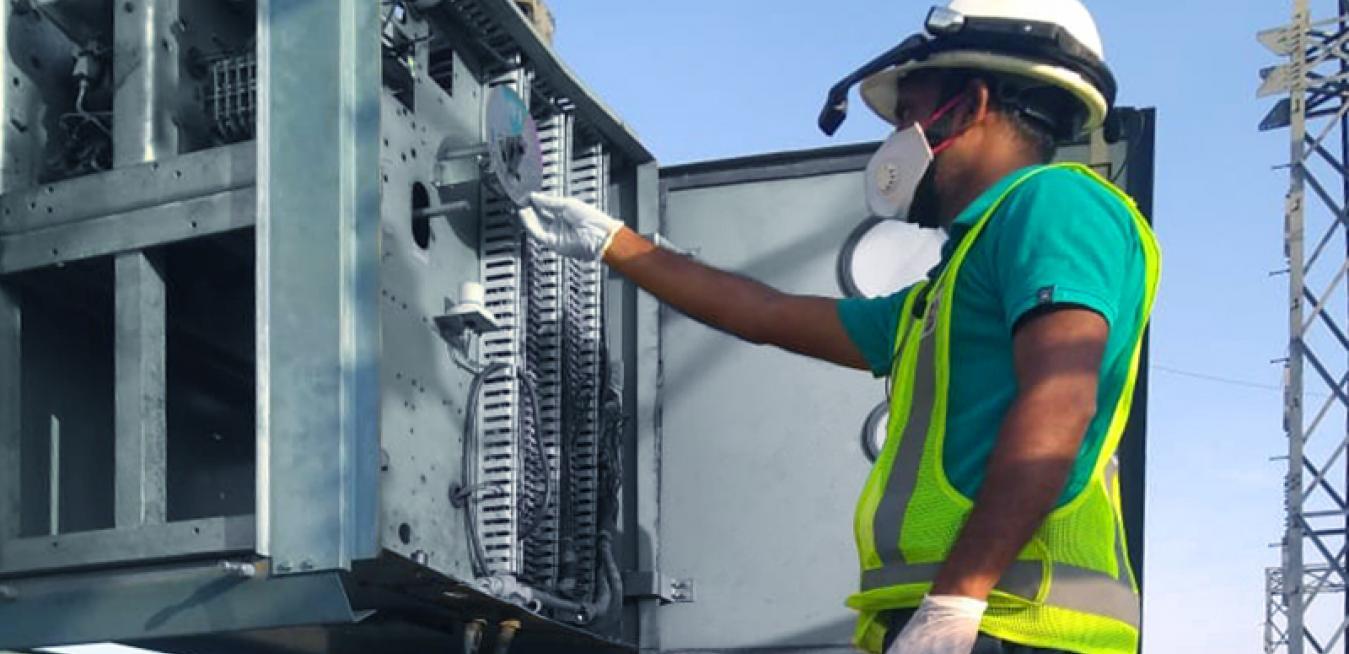
Top image: A technician works on a circuit breaker switch box at HPGCL hydroelectric power site in Yamuna Nagar, India. Image credit: GE Renewable Energy.
There’s what most ordinary people call troubleshooting. And then there’s what Sanjeev Kumar calls troubleshooting.
In May, in the midst of India’s countrywide lockdown due to the COVID-19 pandemic, Kumar, a field service leader for GE Renewable Energy’s Grid Solutions Services unit in India, and his team got a distress call from the Haryana Power Generation Corporation Limited (HPGCL). One of the corporation’s hydroelectric power plants in Yamuna Nagar, a city of 1.2 million people about 140 miles north of the capital of New Delhi, had experienced a sudden breakdown in one of its circuit breakers, interrupting the flow of the 7.2 megawatts of electrical power the station normally generated. If not dealt with, there was a possibility that the problem could persist for days.
The Grid Solutions Services team in India knew they had to act quickly. Besides disrupting the lives of consumers and idling business, a lasting power outage can also deliver a significant hit to a power company’s bottom line. Knowing that it would be difficult and time-consuming to send a team of experts during the COVID-19 lockdown, they dispatched a single field service engineer to Yamuna Nagar equipped with a powerful portable tool: a smart helmet.
The helmet is basically a wireless computer running Android software. It provides field service engineers with a direct link to an off-site technical support team. Whatever the engineer sees, the remote expert sees. Whatever thorny issue is causing an outage, the remote team and the on-site technician can talk it through.
This is possible because the smart helmet comes equipped with a camera, a microphone and a small LCD display mounted just below eye level that allows the field engineer to read instructions or view pertinent schematics sent by the support team while freeing up their hands. “If you don’t have the smart helmet, what is the option?” Kumar says. “You use your smartphone. But using the head-mounted tablet, you are totally safe and are communicating in real time and can use both hands.”
In Yamuna Nagar, the field service engineer discovered that a malfunctioning circuit breaker had stopped charging a switch on a large turbine, causing it to shut down. The support team, located more than a thousand miles to the south in Bangalore, was able to take him through the adjustments needed to reset the energy levels on a spring that closed the circuit. In a matter of hours, the HPGCL substation was up and running again. “Normally, it may take two days’ time for the customer to find and fix a problem like this,” Kumar says.
Closing the plant for that amount of time was not a viable option, especially in a country that has made such a big commitment to hydropower. India currently ranks fifth in the world — just behind China, Brazil, the United States and Canada — with 50.07 gigawatts of installed hydropower capacity. “A prompt response time to customer emergencies with a robust remote service support component is critical, especially when the country faces lockdowns across various states,” says Deepak Sharma, the regional service leader for GE’s Grid Solutions. “Our customers’ business relies on an uninterrupted power supply in grids and industries, and we are ready to support their operations anytime, anywhere to secure their investment.”
Kumar, who is part of Sharma’s team, embodies the urgency. “I want to put my smart helmets to use in every region of India — east, west, north and south.”





